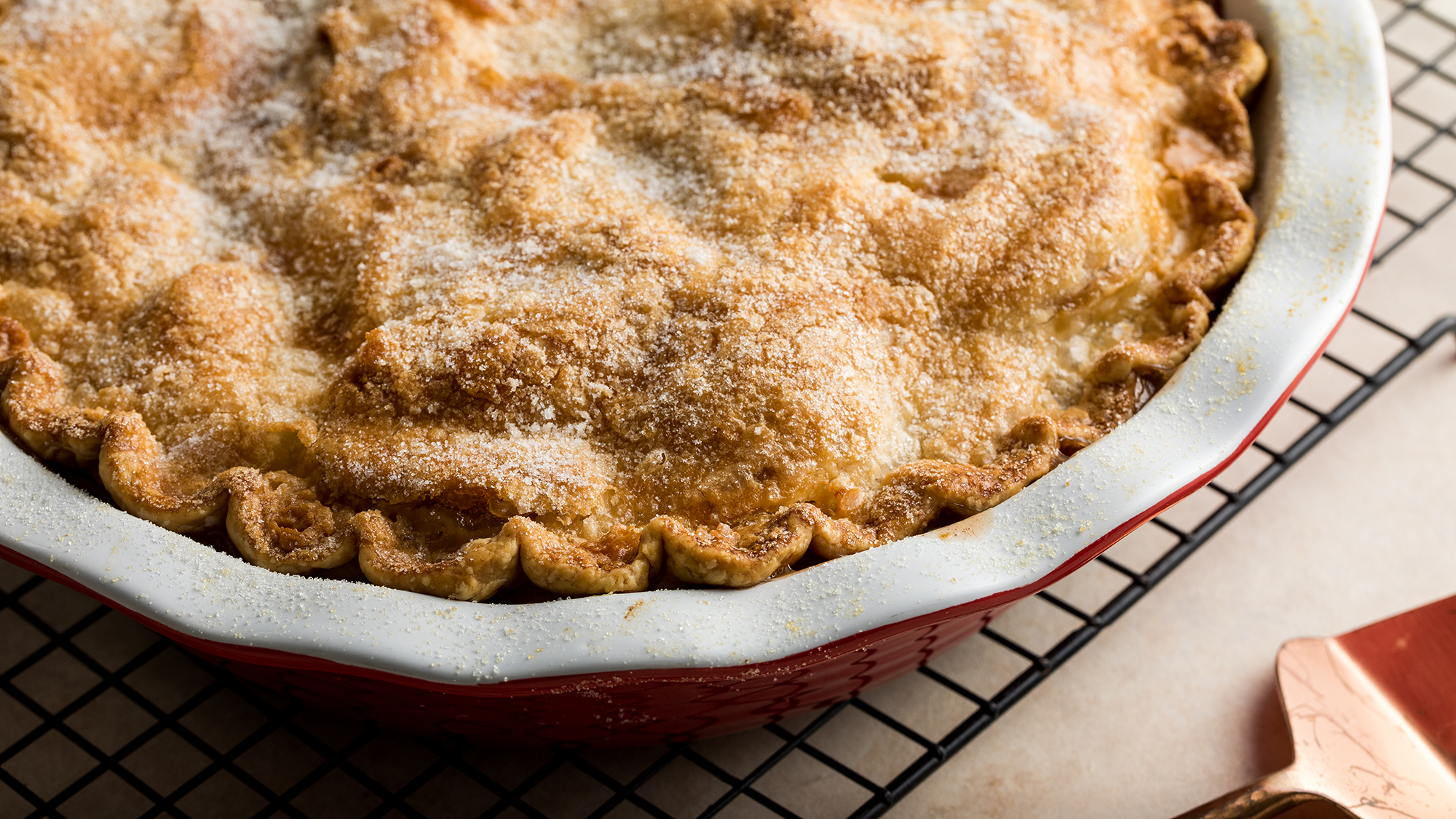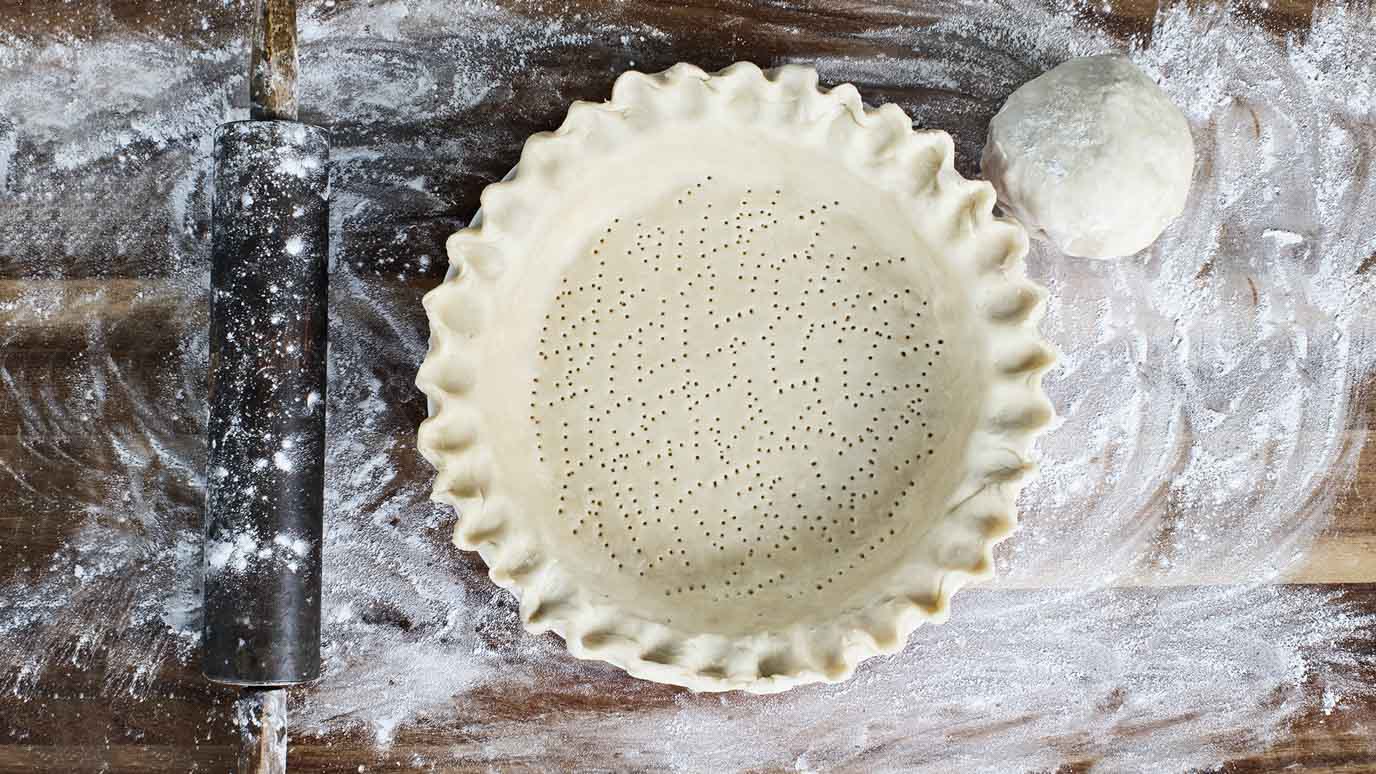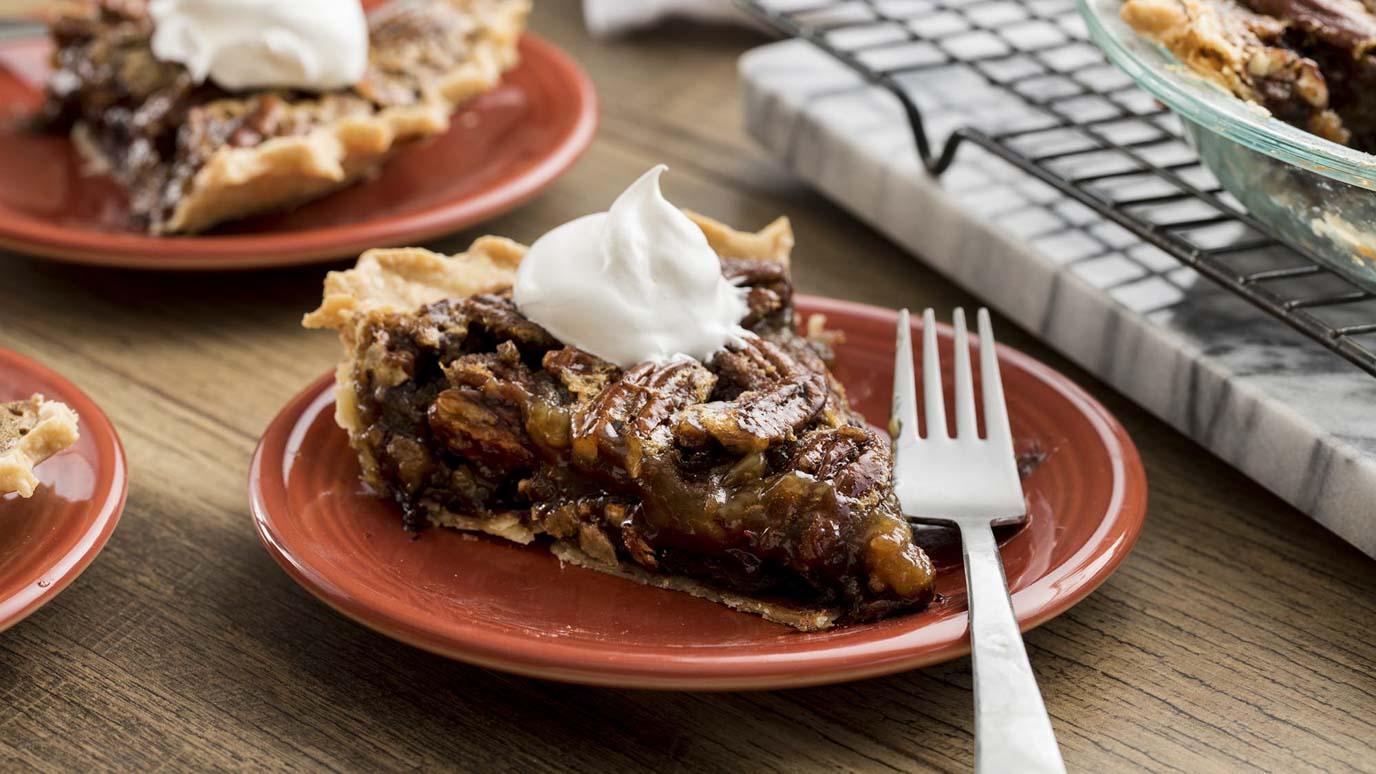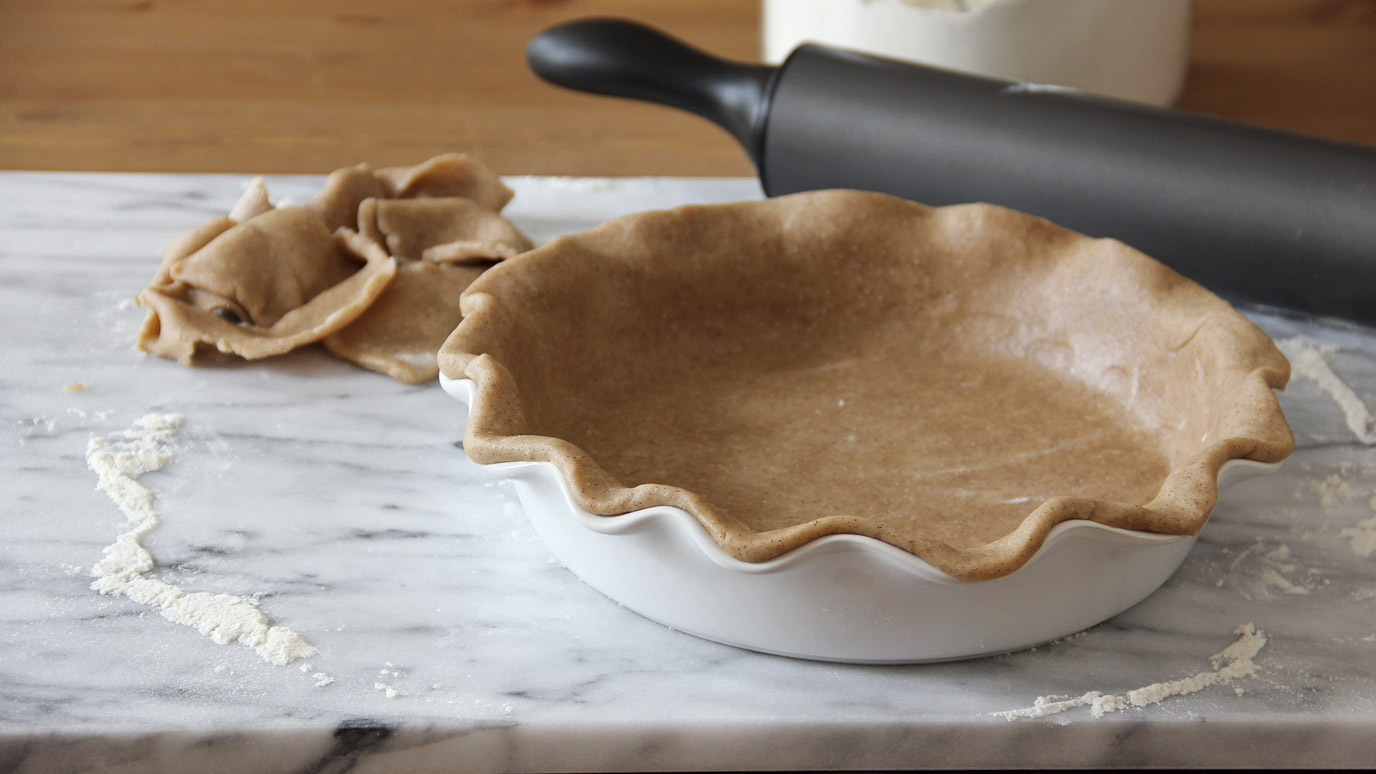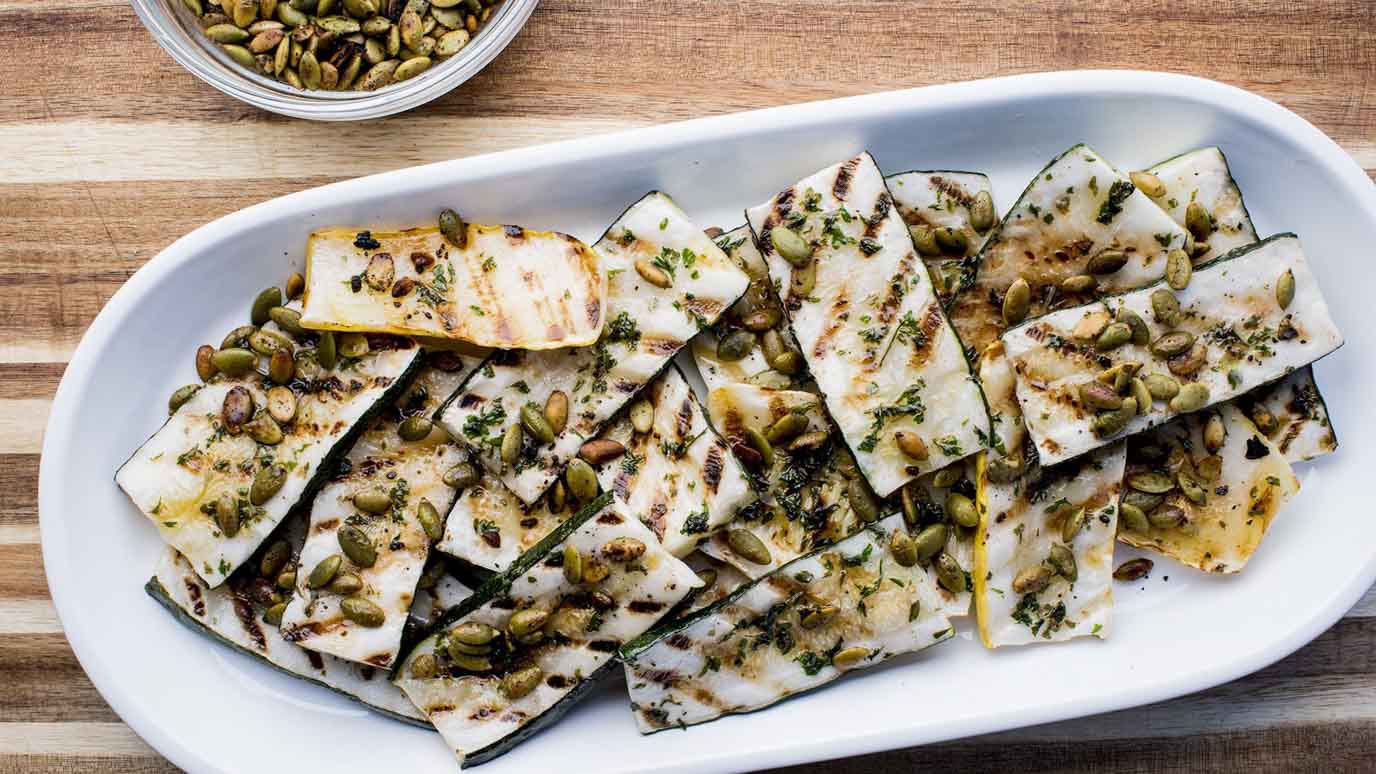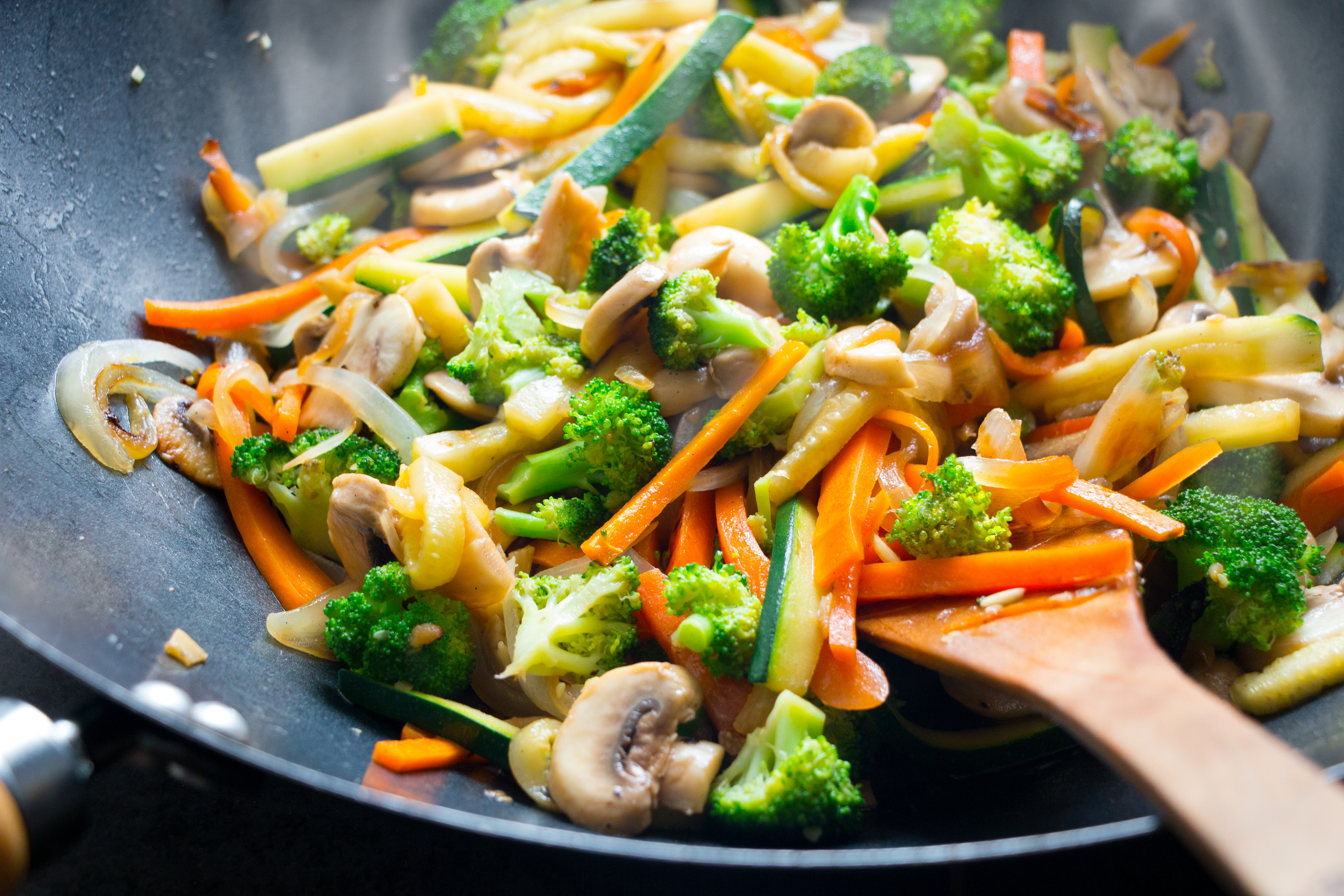High-Quality Ingredients Are Key
High-quality ingredients are all-important in a pie crust recipe. Choose fresh butter or shortening, and don't skimp on the flour. All-purpose flour strikes the right balance of tenderness and strength, making it the go-to choice for perfect pie dough. Too much flour will toughen your crust, while too little will make it fall apart. That's why it's better to measure flour and other baking ingredients accurately. Do it by weight rather than volume for consistent results.
Butter and shortening each have their advantages. Butter gives a delicious flavor and creates flaky layers, while shortening keeps the pie dough stable and prevents shrinking. For the best of both worlds, try combining them in a single pie crust recipe, as per this Homemade Vanilla Pie Crust.
Chilling Out For a Better Pie Crust
A tender, flaky pie crust lies relies on mixing the pie dough properly. Less is more when mixing, because it's important to avoid melting the butter. Keeping it chilled enables it to form the layers that make the crust light and flaky. Keep the butter in pea-sized pieces as you mix the dough. After mixing, wrap it up and let it chill in the fridge for at least 30 minutes. This allows the fat to firm up and the gluten to relax, which makes the dough easier to roll out and keeps it from shrinking when it bakes.
Water is another critical ingredient, and it's important to use it wisely. Always use ice-cold water to help the butter stay cold. Add it a little at a time, mixing just until the dough holds together. Too much water will make your dough sticky, and too little will leave it dry and crumbly.
Rolling a Picture-Perfect Crust
When it's time to roll out your chilled dough, work on a lightly floured surface and roll from the center outward. Rotate the dough frequently to ensure even thickness and prevent sticking. If the dough cracks, it may be too cold. If so, let it sit for a few minutes before rolling again. This will help you whether you're making a double-crust pie or creating a homemade pie crust for an open-faced recipe like our Sweet Potato Pie.
For pies that require blind baking (pre-baking the crust before adding the filling), use pie weights or dried beans to keep the crust from puffing up. Place a layer of parchment paper over the dough, fill with the weights, and bake until the crust is lightly golden. This technique works perfectly when making pie dough for recipes like our Chocolate Pecan Pie.
Getting it Golden and Flaky
A golden, flaky crust is the hallmark of a great pie, so bake until the crust is deeply golden. If your pie filling requires a pre-baked crust, make sure you blind bake it until it's firm but not overly brown. To prevent the edges from burning, cover them with foil halfway through baking.
If your crust is shrinking, the dough likely wasn't chilled enough or was overworked during rolling. Avoid stretching the dough when you place it in the pan. Just gently press it in place.
Spice It Up and Decorate
For a more decorative pie crust, try adding a little flavor to the dough. Spices like cinnamon or nutmeg can complement the filling and add an extra touch of warmth. Here's a Cinnamon Pie Crust recipe to inspire you. Another option is to create a lattice or braided top, which not only adds visual appeal but also lets that all-important filling peek through.
If you want to get creative, use cookie cutters to make shapes that you can place on top of the pie. These simple touches can transform your baked creation from everyday to extraordinary.
Pie Crust Problems? Here's Some Help
Even experienced bakers encounter pie crust issues. If you find your crust is too tough, you likely overworked the dough. Another common problem is a soggy bottom, which usually means the crust wasn't baked long enough or the filling was too wet. Avoid this by blind baking and ensuring your crust is cooked until golden.
Mastering the perfect pie crust is all about patience and precision, along with the expert tips we've given you here. Whether you're crafting a buttery classic or experimenting with creative designs, these tips will have you producing homemade pie crusts that rival those from any bakery. So grab your rolling pin, chill that dough, and get ready to impress with every slice!
Try Out Your Pie Crust with These Delicious Pie Recipes
Got pie crust fever? We don't blame you. Here are some of our favorite pie recipes to try.



